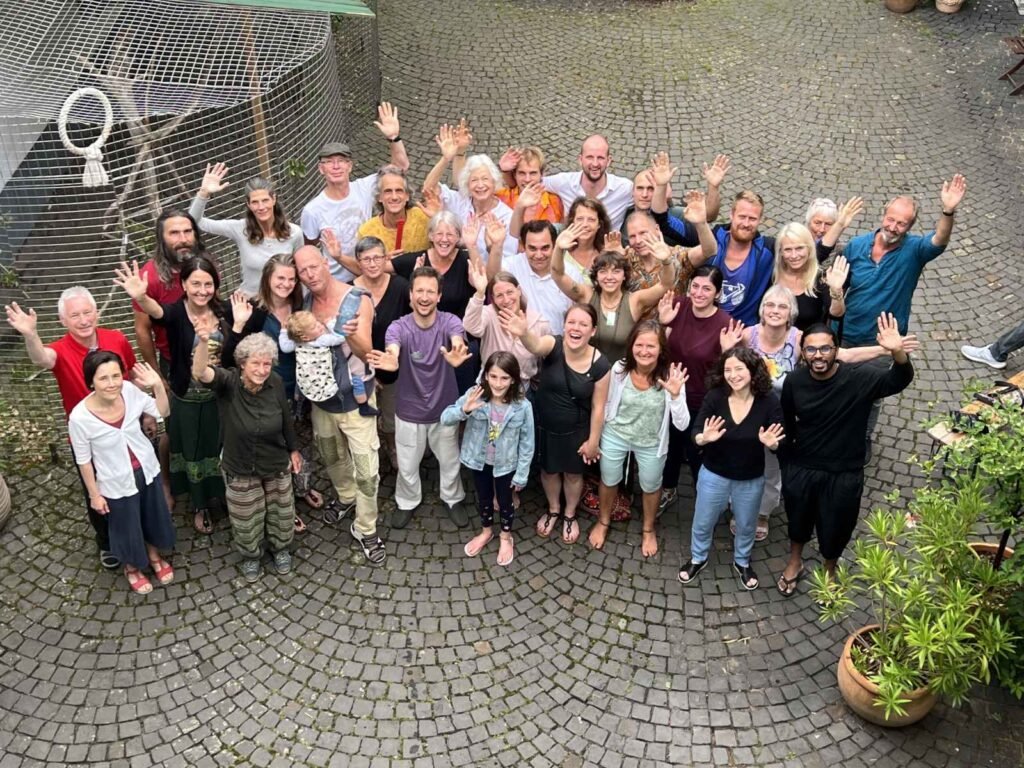Spirituelle Kurzfilme:
Teachings, Inspirations, Motivations
von John David
Kommende Events:
Wöchtenliche Zoom Treffen
Jeden Dienstag um 20 Uhr
Public Live Satsang
Jeden Freitag um 20:15 Uhr
Neues Buch
über Selbstverwirklichung
Dunkelretreat
Mantra Musik
mit der Open Sky Band
–Rumi
Heartdance, also known as Sufi whirling or Sufi spinning, is a form of movement meditation that originated in the Sufi tradition. It involves spinning the body in a circular motion while focusing on the breath, the heart, and the divine.
In Sufism, the heart is considered to be the center of spiritual awareness and the source of divine love. The heart is seen as a mirror that reflects the light of the divine, and the practice of heartdance is a way to purify the heart and align oneself with the divine.
The spinning motion of heartdance is believed to help create a state of ecstatic trance, where the individual is able to let go of the ego and connect with the divine. It is said to bring a sense of peace, joy, and spiritual awakening.
Heartdance is often practiced in groups, with participants spinning together in a circle. The spinning is accompanied by music and chanting, which helps to deepen the meditative experience and create a sense of unity and connection among the participants.
Overall, heartdance is a powerful spiritual practice that is designed to help individuals connect with the divine and experience a sense of inner peace and spiritual awakening.


Letting go of attachments while dancing with others can be a challenge, but it is possible with practice and intention. Here are some tips that may help:
Focus on the present moment: One of the keys to letting go of attachments is to focus on the present moment, rather than dwelling on the past or worrying about the future. When you’re dancing with others, try to stay present and focus on the music, the movement, and the connection with your dance partners.
Let go of expectations: Often, attachments arise when we have expectations about how things should be. When you’re dancing with others, try to let go of any expectations you may have about how the dance should look or feel. Instead, focus on being open to whatever arises in the moment.
Practice non-attachment: Non-attachment is the practice of letting go of our attachment to particular outcomes, and instead being open to whatever arises. When you’re dancing with others, try to practice non-attachment by letting go of your attachment to specific dance moves or partners. Instead, be open to whatever arises in the moment.
Cultivate compassion: Cultivating compassion for yourself and others can also help you let go of attachments. When you’re dancing with others, try to approach the experience with a sense of compassion and kindness, both for yourself and for your dance partners.
Focus on the joy of the experience: Ultimately, dancing with others should be a joyful experience. When you’re dancing, try to focus on the joy of the experience, rather than getting caught up in your attachments or expectations. Allow yourself to be fully present in the moment and enjoy the dance for what it is.


Dancing has a rich spiritual history across many cultures and traditions. In many spiritual practices, dancing is seen as a way to connect with the divine and access higher states of consciousness.
One of the key spiritual aspects of dancing is its ability to help us connect with our bodies and our emotions. Through dance, we can express ourselves in a way that is both physical and emotional, allowing us to connect with our inner selves and explore our spiritual nature.
In some spiritual traditions, dancing is also seen as a form of prayer or worship. For example, in many African and Afro-Caribbean religions, dancing is a central part of religious ceremonies and is used to connect with ancestral spirits and the divine. Similarly, in some Native American and Indigenous cultures, dance is used as a form of prayer and communication with the spirit world.
Dancing can also be a form of meditation, helping us to quiet our minds and focus on the present moment. In many forms of ecstatic dance, for example, the goal is to enter a state of trance or altered consciousness, which can be a powerful tool for spiritual exploration and growth.
Overall, dancing has many spiritual dimensions, and can be a powerful tool for connecting with the divine, exploring our inner selves, and accessing higher states of consciousness.
